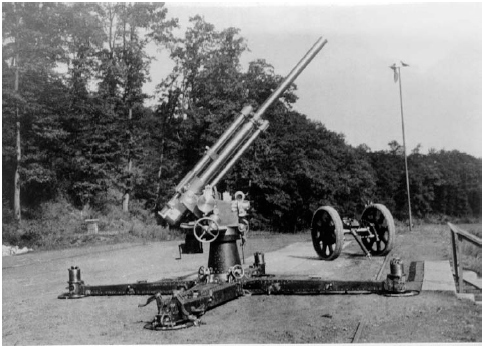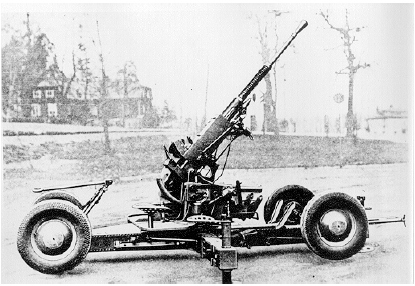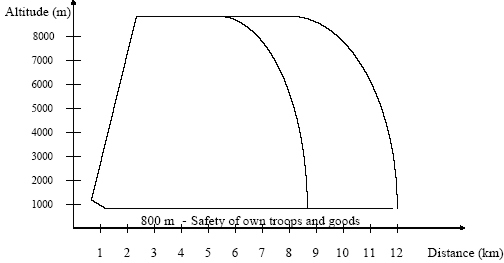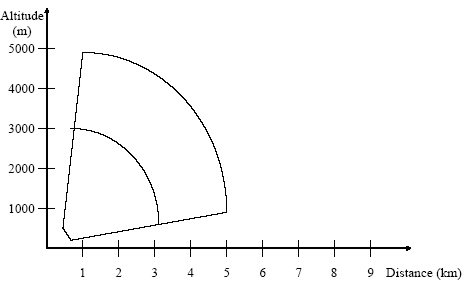Abstract A szerzők áttekintették a magyar hadtörténelem egy érdekes szakaszát, amikor Magyarország vásárolt, gyártott és a hadműveletekben alkalmazott egy svéd fejlesztésű légvédelmi tüzér fegyverrendszert. A témát különösen aktuálissá teszi, hogy a két ország között hasonló haditechnikai együttműködés figyelhető meg napjainkban is, amelynek keretei között a Magyar Honvédség folyamatosan megkapja, és rendszerbe állítja a negyedik generációs harcászati repülőgépet a Jas-39 Gripent. A cikk rövid áttekintést ad a magyar légvédelmi tüzérség helyzetéről az 1920-as évektől, majd kitér a fejlesztés főbb állomásaira és a Bofors szabadalom alapján gyártott 29M és 36M légvédelmi ágyú harci alkalmazásának főbb tapasztalataira. The authors overviewed an interesting part of Hungarian military history when Hungary bought, produced and used a Swedish made air defence weapon system. This topic is in particular timely and remarkable because nowadays we can observe similar Hungarian-Swedish cooperation in the field of military technology. In the framework of this cooperation the Hungarian Defence Forces are permanently getting 4th generations tactical aircraft from Gripen International (SAAB and BAE systems). This article gives a short summary the situation of the Hungarian air defence artillery in the early 20th century and development process and the military experiences of using so-called Bofors guns. Keywords: légvédelmi tüzérség, légvédelmi tüzér fegyverrendszer, haditechnikai együttműködés, hadtörténelem, air defence artillery, air defence weapon system, military-technology cooperation, military history Introduction The last decade of the twentieth century and the first ten years of the 21st century brought a new challenge for the Hungarian Defence Forces (HDF) and we have been looking for the answers and solutions. Changes in internal and external and military policy have brought significant changes for the Hungarian military, along with changes in society, and changes in the military alliance - influenced military organisations, and consequently, the necessary weaponry, as well. In the 90's an intensive reform that began in the previous decade continued. For the purpose of complying with the needs of a transformed environment and requirements, the HDF had to transform its organisational structure, its system of operation and the way of thinking. For NATO operational compability it is necessary, of course, to modernise, and, quite often, to change equipment and technology. Part of this process is the changes in the Hungarian Air Force. Replacement of existing Soviet equipment is continuous, with financial constraints considered.
The first JAS (Gripen) type multifunctional aircraft has arrived to Hungary. One of the most remarkable events in the process of the change of Soviet equipment is the replacement of the MIG-29s. There are other examples of the Hungarian - Swedish military-technical cooperation. In our article we would like to remind our readers about this once - successful cooperation and its results. The situation of the Hungarian air defence artillery in the early 20th century The defeat in WW1 and the Trianon agreement which finished the war for Hungary, made the situation very difficult for the country. The decisions of the Hungarian Peace Treaty [1] deprived the country of the active air defence; however, war experiences proved that air operations will be crucially important in future military conflicts. The 5th part of the agreement, "The military, naval and air orders" prohibited the operation of military aircraft.
Since the 108 article of the 1st chapter in part V said that " Hungary is prohibited from operating any military units that are not mentioned in the enclosed table", Hungary was banned from consequently having either aircraft or air defence guns. In spite of this, the Hungarian Ministry of Defence decided to establish air defence artillery, but due to the above mentioned facts, this had to be done secretly. In 1922 there was a decision to produce the air defence variant of the 5/8M cannon, in spite of the fact that it was clear that this equipment was not modern and it was difficult to move it. The decision was motivated by the fact that we already possessed the plans and we were able to produce it domestically. Until 1924 there were altogether 24 pieces produced of this of this equipment, along with the already - possessed 12 air defence ammunition which comprised the technical equipment of the Hungarian air defence until 1930. The combat possibilities of this military service, because of the quantity and modernity of the equipment were very limited. Finally, by 1928 it became apparent that the so-far domestic production of the cannons did not bring the expected results. There were further problems with the 5/8M. The tubes burned, mainly due to the poor quality of the material. The experiments with the air defence gun in the Technical Experimentation Institute did not also bring the expected results The 8.8 cm, the 8.35 cm, the 8 cm, the 7 cm and the 6.6 cm caliber guns, except for the 6.6 cm one, basically existed only on the drawing board. So the military leadership looked for other options. The Peace Treaty said that we were not allowed to buy military materials, so there was a decision to get the licence. After examining many types of ammunition (both in Italy and Sweden) [2] the specialists of the MOD decided to use the BOFORS Company. They chose the 8cm L/50 ammunition type. The 29M air defence gun had excellent qualities. It was a midcornered, shieldless, recoiless-tubed, machine-towed, semi-automatic-locked weapon. The main parts consisted of a tube and the rear tube, the lock, the upper and the bottom midcorner, the baseplate and the platform. It was highly mobile; it could be combat and fire - ready within 1.5 minutes. This ammunition could be perfectly used against both air and land targets. It is important to emphasize that the 29M had much better qualities than the 5/8.
The Hungarian air defence using BOFORS The Hungarian air defence artillery started to develop very dynamically. In 1930 the production of an experimental gun and air defence battery (4 pieces) started. During the experiments it was established that the 29M has even better qualities than the expected factory ones. After tests firing at troops, the MOD asked the Diosgyor factory to produce 40 air defence guns in 1931. The new guns underwent further testing and the newly established testing department gave excellent performance results both in marching and shooting exercises. At the same time, and not for the first time, an urgent need appeared, as, apart from the modern air defence required batteries there was also a need for cannons. The 29M was an effective weapon, but a cannon was needed against high and big velocity targets. As a supplement for the weapon system, the Institute of Military Technology offered to buy the BOFORS 40 cm tubelength L60 automatic cannon. [4] This ammunition was used on navy ships at that time, but the Swedes were asked to produce a type that could be used against troops. [5a] After the licence was obtained, in 1936, the 40mm 36M air defence cannon was put into work. (The same cannon was used in Sweden, Norway, Denmark, Finland, Estonia, Belgium, Holland, Austria, and Poland. Its production was bought by China, and Yugoslavia, and it was planned to start it in Great Britain). The weapon had excellent operational qualities. The 36M was a midangled, automatic, with sustained fire capabilities and machine-towed. The tubes could be changed in 1 minute. The rate of fire was 100-120 rounds/minute. The starting rate of projectile was 850m/S, its munition was an impact, or illuminating shell. If there was no hit, the projectile exploded after 11 seconds, at 4000ms. The Hungarian military leadership ordered 100 pieces from MÁVAG, and then this quantity was raised to 112. For the towing of the cannon the KV40 tractor was chosen from the Hungarian Machinery Production company. [6] The Hungarian military trade received a lot of orders for the 29Ms, for ammo, and mainly for 36Ms from abroad, too starting from 1938. But, despite the success, only a small amount of the orders could be satisfied since the Hungarian Staff did not support shipping. Another example of the cooperation was that the BOFORS company bought back 18 pieces of 36Ms from Hungary. [5b]
In March 1938 the Hungarian MOD bought one piece of the L60 tank and the L60 armour, together with their licences. This later became the well-known and successful NIMROD that caused a lot of debate between the Air Force and the Land Forces. The weapon was equipped with the 36M tube, and it could be used against both air and armoured targets. When talking about Hungarian - Swedish cooperation, it is important to mention the case that illustrates the success of the cooperation. Juhasz Istvan, the owner of the Hungarian GAMMA factory and an inventor, produced an excellent firing examination equipment (GAMMA-Juhasz) in the beginning of the 30s in the beginning of the 30s. An analog computer built from mechanical and electromechanical elements and made to calculate very rapidly the ammunition needed for shooting an approaching aircraft. This equipment guided four air defence cannons and highly increased the chance of destruction. There were more than 1000 pieces made of this equipment and many foreign militaries bought it (Argentina, Austria, Finland, Holland, China, Poland, Norway, Italy, Persia, etc.) The Swedish Bofors also bought the licence. The combination of the fire examination equipment and the 29M air defence cannons produced an effective system. The combined air defence system was produced both in Hungary and Sweden. Some main WW2 experiences of the weapon system [7] The Hungarian military used its air defence cannons and mechanised cannons in the domestic air defence role successfully as well. In certain periods of time, though it was not general, the troops, equipped with 36M could reach a 1% and higher rate which was an extremely good result. The success of the weapons could be shown by the facts that during April 3, 1944, bombing of Budapest 99 bombers were hit. However, the air operations of the enemy could not be stopped. [5c] In 1941, the air defence troops belonging to the Hungarian light and rapid corps, 4 air defence artillery battalions, mechanised batteries of brigades and the half-platoons protecting air force wings, fought continuing battles against the Soviet Union (altogether 1-1 air defence mechanised cannons). Talking about the former, it could be said that they did not provide enough strength for aircraft protection. From August 2nd until September 10th the air defence forces shot down 8 aircraft. The efficiency was more or less as it was expected. At this period of time the 29Ms produced a 0.34% result, the 36Ms a result of 1.082%. Until November, according to the known data they destroyed altogether 38 targets. During the war, the anti-armour capability was brilliantly proved by the NIMROD, the29M and the 36M. In 1942 the second Hungarian army, fought during the battle against the Soviet Union, for the protection of the army. 7 batteries of 29Ms and 107 pieces of 36Ms (18 Nimrods among them) were used. During the battle, while approaching the Don, among the tasks of air defence and armoured protection became more important. In September 1942 there were already 24 pieces of 29Ms and 36 pieces of 36Ms with the units. By November, all the 29Ms and 77% of the 36Ms were in operation. It is necessary to mention that these decisions proved to be right, at least this is what the events show. No Soviet armoured device was an obstacle for the 29Ms. The 36Ms and the Nimrods, however, were usually unsuccessful against the KV heavy and the T-34 medium tanks. The air defence activities of the Hungarian second army were also successful. The air defence artillery managed to destroy 206 enemy targets. It is worth emphasizing the results of the debated Nimrods, which managed to shoot 40 aircraft between July and September. The antiaircraft devices played an important role during the 1943 Soviet attack. However, 81 pieces of machine guns were lost, which is about 75.7% of the entire stock, and all cannons, altogether 28 pieces. During the battle and the withdrawal, a lot of guns were destroyed because of the technical problems of the towing. Conclusion The Hungarian military found the 29M air defence cannon, the 36M air defence mechanized cannon and the Nimrod to be their most modern and the most successful weapons and they proved to be very successful in battle. We sincerely hope that the Swedish - Hungarian military technology cooperation - and hopefully not in the situations mentioned in this article - will be successful for both sides in the future, not to mention the fact that the development of new weapons and new military technology devices can be achieved best within international cooperation in modern times. Bibliography: [1] A Magyar Békeszerződés, Kiadja a M. Kir. Külügyminisztérium Bp. M. Kir. Tud. - Egyetemi nyomda, 1920. [2] Hadtörténeti Levéltár, VKF, 1. o. 5152/T 1929. [3] Légvédelmi Tüzérségi Szabályzat 3. füzet: Lőutasítás, Budapest, 1938 Attila nyomda részvénytársaság [4] Hadtörténeti Levéltár, VKF, 1. o. 105103/Eln. 1935. [5] Dr. Varga József: A légvédelmi tüzérség története a kezdetektől a második világháború végéig, Magyar Honvédség Légvédelmi Rakéta- és Tüzérfőnökség kiadványa, 1996. [6] Hadtörténeti Levéltár, VKF, 1. o. 1372/Eln. 1936. [7] Dr. Barcy Zoltán: A Magyar légvédelmi tüzérség fejlődése a Horthy korszakban, Hadtörténeti Levéltár, Tanulmánygyűjtemény
|
© ZMNE BJKMK 2006.




